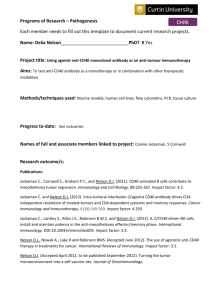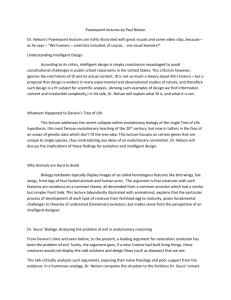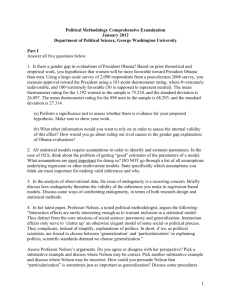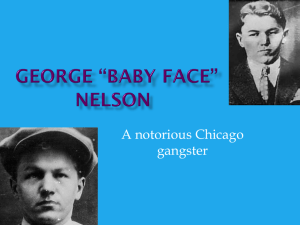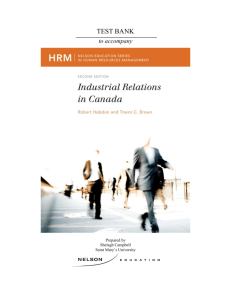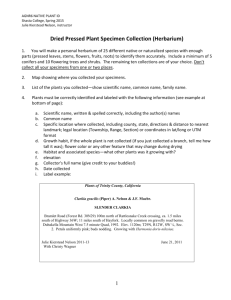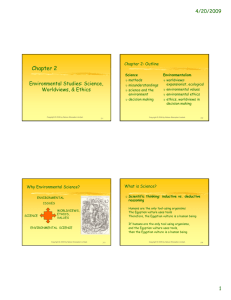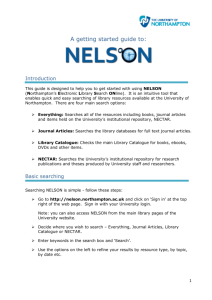Essentials of Managing Human Resources, Fourth Canadian Edition
advertisement
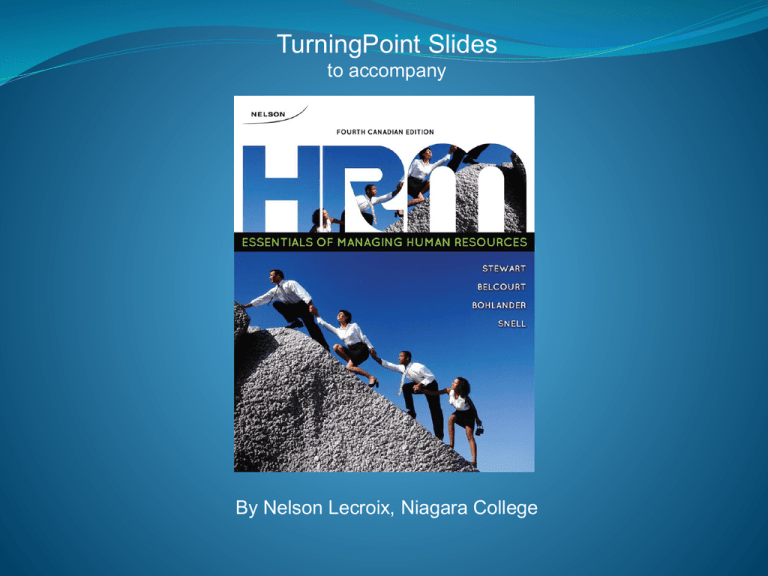
TurningPoint Slides to accompany By Nelson Lecroix, Niagara College Chapter 7 Recognizing and Rewarding Employees Copyright © 2011 Nelson Education Limited 2 1. Employee compensation refers to: 25% a) deciding compensation 25% 25% 25% b) directing performance improvement c) determining training needs d) discharging decisions 0% a) Copyright © 2011 Nelson Education Limited 0% a) b) 0% b) c) c) 0% d) d) 3 2. The more common goals of a compensation policy include all of the following EXCEPT: a) to influence employee behaviours b) to retain key staff c) to control the compensation budget d) to remain competitive in the product market Copyright © 2011 Nelson Education Limited 25% a) 25% 25% b) c) 25% d) 4 3. Research studies illustrate that after a pay-for-performance program has been implemented, employees will increase their output by: 25% 25% 25% b) c) 25% a) 35 to 50 percent b) 15 to 35 percent c) 50 to 75 percent d) 5 to 10 percent a) Copyright © 2011 Nelson Education Limited d) 5 4. Among the many forms of employee motivation, experience dictates that the most important motivator is still: 25% a) power 25% 25% b) c) 25% b) money (pay) c) responsibility d) achievement a) Copyright © 2011 Nelson Education Limited d) 6 5. Blue-collar workers, for example, employees compensated on an hourly basis, are also known as: a) wage earners 25% 25% 25% 25% b) salaried employees c) piecework employees d) gainsharers 0% a) a) Copyright © 2011 Nelson Education Limited 0% b) b) 0% c) c) 0% d) d) 7 6. Compensation must be purposefully linked to the organization’s mission and general business objectives. 50% 50% 1. True Copyright © 2011 Nelson Education Limited Fa l se Tr u e 2. False 8 7. A recent survey has demonstrated that there is no link between an integrated approach to rewards and achieving strong business results. 50% 50% 1. True Copyright © 2011 Nelson Education Limited Fa l se Tr u e 2. False 9 8. Compensation should be tailored to the needs of the organization; not its employees. 50% 50% 1. True 2. False Copyright © 2011 Nelson Education Limited Fa l se se Fa l e 0% Tr u Tr ue 0% 10 9. Compensation for work performed in most organizations has traditionally been on an hourly basis. 50% 50% 1. True 2. False Copyright © 2011 Nelson Education Limited Fa l se se Fa l e 0% Tr u Tr ue 0% 11 10. When wage rates rise above existing area levels, an employer's labour costs may become excessive; therefore, it is important to use wage surveys. 50% 50% 1. True 0% Copyright © 2011 Nelson Education Limited se Fa l Tr ue Tr u e 0% Fa l se 2. False 12

